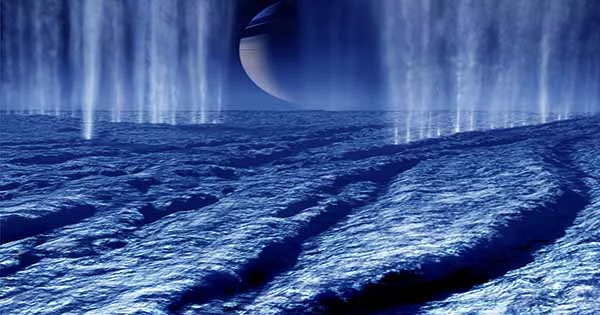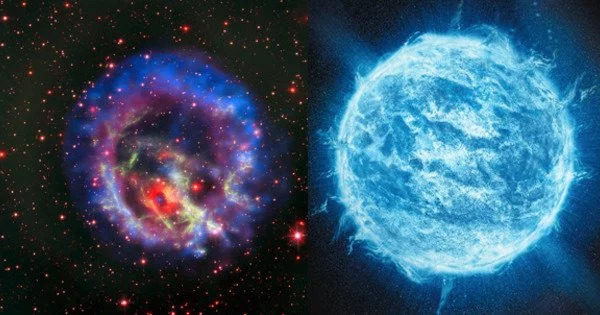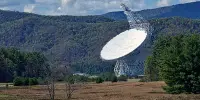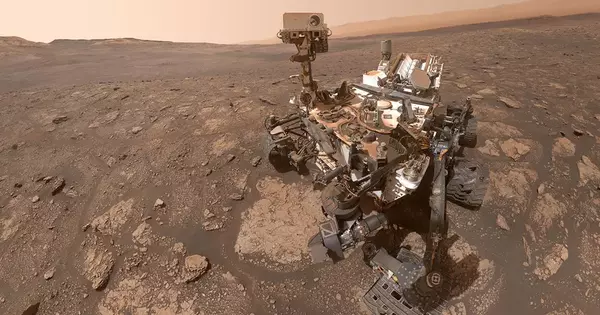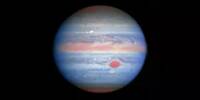Astronomers have regarded Enceladus, the sixth largest of Saturn’s 83 moons, as one of the more intriguing bodies in our solar system despite its comparatively small size.
Because of how it appears and behaves, Enceladus differs from other celestial entities. The brightest and whitest surface ever seen by scientists can be found on it. Additionally, it is well known for spewing out minuscule ice silica particles in such large quantities that they play a significant role in the formation of Saturn’s so-called E ring, the second outermost ring.
The term “ocean planet” refers to a celestial body with a significant amount of liquid water, such as Enceladus. However, unlike seas on Earth, which are found on the surface of the planet, Enceladus’ ocean is shielded by a substantial amount of ice. The ocean isn’t entirely contained by the ice, though; huge cracks in the ice known as “tiger stripes” allow some materials from the wet region to escape toward Enceladus’ warmer south pole.
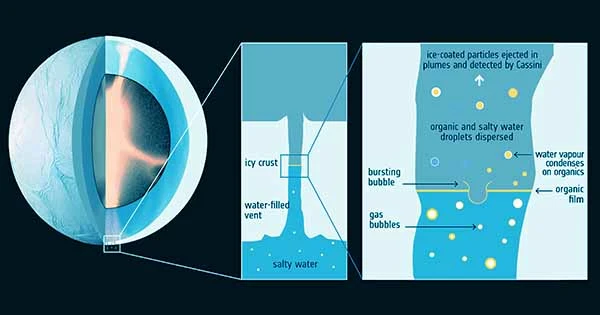
Scientists are still unsure of how or how long the silica particles ejected by Enceladus start their journey at the sea bottom, thousands of feet below the surface of the moon.
A recent study conducted by UCLA researchers provides some clarification. According to the study, the silica is likely released by deep-sea hydrothermal vents over the course of just a few months and is then transported by currents that are created by tidal heating in the rocky core of Enceladus.
Communications Earth & Environment published the study.
A team headed by Ashley Schoenfeld, a doctoral candidate in planetary science at UCLA, examined information gathered by NASA’s Cassini spacecraft about the orbit, ocean, and geology of Enceladus. The researchers created a speculative model to explain how silica was transported across the ocean.
As it orbits Saturn, tidal forces push and pull on Enceladus, causing its active geology to be propelled. The novel model showed that the friction heats the ocean’s bottom to the point where a current moves the silica particles toward the top of the water. This deformation causes friction in both the moon’s ice shell and its deep rocky core.
According to Schoenfeld’s study, these flows are powerful enough to pick up materials from the ocean bottom and transport them to the ice shell that separates the ocean from space. “For the purpose of launching captured materials into space, the tiger-stripe fractures that pierce through the ice shell and into this subsurface ocean can serve as direct channels. Enceladus is offering us complimentary samples of what lies below the surface.”
Together with the silica, Cassini’s discovery of significant hydrogen gas in the plumes provides strong proof that hydrothermal activity is occurring at the ocean bottom. The theoretical model developed by the UCLA-led team supports that theory by outlining a likely timeframe for the process and a solid mechanism that would account for why the silica-containing plumes exist. The silica particles are transported to the top along with other materials, which the model would also help to explain.
Second author Emily Hawkins, a UCLA alumna who is currently an assistant professor of physics at Loyola Marymount University, said, “Our model further supports the notion that convective turbulence in the ocean efficiently transports critical nutrients from the seafloor to ice shell.”
Similar deep-sea hydrothermal vents on Earth are home to a wide variety of amazing organisms that eat the minerals the vents emit.
More data could be gathered by spacecraft in the future, allowing researchers to better understand the physical and chemical characteristics of Enceladus’ potential hydrothermal vent networks. The new study provides some advice that should help the search for those biosignatures. In order to determine whether those vents could support life, scientists would need to analyze the plumes for chemical traces of biological activity, known as biosignatures.
Missions to fly by, orbit, and settle on Enceladus are planned by NASA for the following ten years in order to collect more data.
The team, which is headed by UCLA, intends to create additional modeling that might aid in forming plans for those missions.
